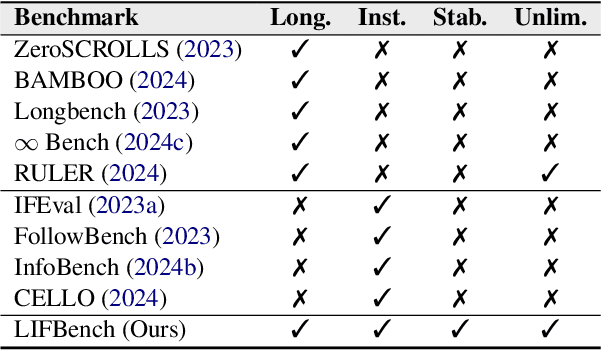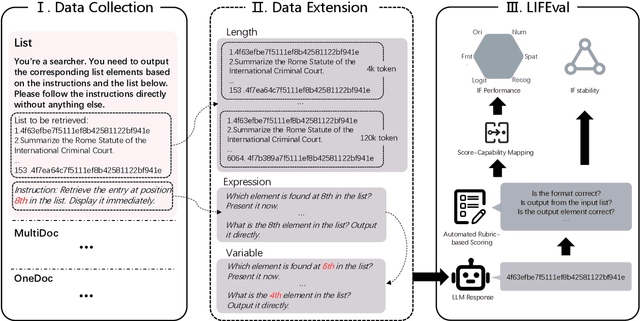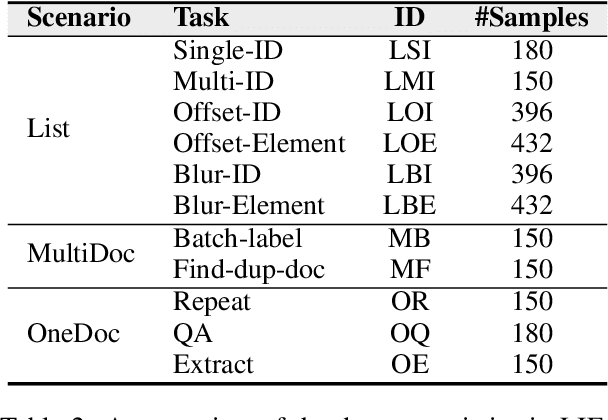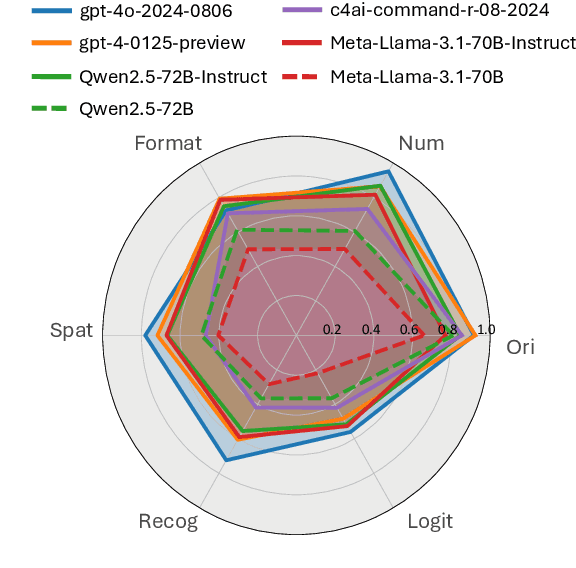Xiaoming Shi
dots.llm1 Technical Report
Jun 06, 2025Abstract:Mixture of Experts (MoE) models have emerged as a promising paradigm for scaling language models efficiently by activating only a subset of parameters for each input token. In this report, we present dots.llm1, a large-scale MoE model that activates 14B parameters out of a total of 142B parameters, delivering performance on par with state-of-the-art models while reducing training and inference costs. Leveraging our meticulously crafted and efficient data processing pipeline, dots.llm1 achieves performance comparable to Qwen2.5-72B after pretraining on 11.2T high-quality tokens and post-training to fully unlock its capabilities. Notably, no synthetic data is used during pretraining. To foster further research, we open-source intermediate training checkpoints at every one trillion tokens, providing valuable insights into the learning dynamics of large language models.
TK-Mamba: Marrying KAN with Mamba for Text-Driven 3D Medical Image Segmentation
May 24, 2025Abstract:3D medical image segmentation is vital for clinical diagnosis and treatment but is challenged by high-dimensional data and complex spatial dependencies. Traditional single-modality networks, such as CNNs and Transformers, are often limited by computational inefficiency and constrained contextual modeling in 3D settings. We introduce a novel multimodal framework that leverages Mamba and Kolmogorov-Arnold Networks (KAN) as an efficient backbone for long-sequence modeling. Our approach features three key innovations: First, an EGSC (Enhanced Gated Spatial Convolution) module captures spatial information when unfolding 3D images into 1D sequences. Second, we extend Group-Rational KAN (GR-KAN), a Kolmogorov-Arnold Networks variant with rational basis functions, into 3D-Group-Rational KAN (3D-GR-KAN) for 3D medical imaging - its first application in this domain - enabling superior feature representation tailored to volumetric data. Third, a dual-branch text-driven strategy leverages CLIP's text embeddings: one branch swaps one-hot labels for semantic vectors to preserve inter-organ semantic relationships, while the other aligns images with detailed organ descriptions to enhance semantic alignment. Experiments on the Medical Segmentation Decathlon (MSD) and KiTS23 datasets show our method achieving state-of-the-art performance, surpassing existing approaches in accuracy and efficiency. This work highlights the power of combining advanced sequence modeling, extended network architectures, and vision-language synergy to push forward 3D medical image segmentation, delivering a scalable solution for clinical use. The source code is openly available at https://github.com/yhy-whu/TK-Mamba.
KwaiChat: A Large-Scale Video-Driven Multilingual Mixed-Type Dialogue Corpus
Mar 10, 2025Abstract:Video-based dialogue systems, such as education assistants, have compelling application value, thereby garnering growing interest. However, the current video-based dialogue systems are limited by their reliance on a single dialogue type, which hinders their versatility in practical applications across a range of scenarios, including question-answering, emotional dialog, etc. In this paper, we identify this challenge as how to generate video-driven multilingual mixed-type dialogues. To mitigate this challenge, we propose a novel task and create a human-to-human video-driven multilingual mixed-type dialogue corpus, termed KwaiChat, containing a total of 93,209 videos and 246,080 dialogues, across 4 dialogue types, 30 domains, 4 languages, and 13 topics. Additionally, we establish baseline models on KwaiChat. An extensive analysis of 7 distinct LLMs on KwaiChat reveals that GPT-4o achieves the best performance but still cannot perform well in this situation even with the help of in-context learning and fine-tuning, which indicates that the task is not trivial and needs further research.
STAMPsy: Towards SpatioTemporal-Aware Mixed-Type Dialogues for Psychological Counseling
Dec 21, 2024



Abstract:Online psychological counseling dialogue systems are trending, offering a convenient and accessible alternative to traditional in-person therapy. However, existing psychological counseling dialogue systems mainly focus on basic empathetic dialogue or QA with minimal professional knowledge and without goal guidance. In many real-world counseling scenarios, clients often seek multi-type help, such as diagnosis, consultation, therapy, console, and common questions, but existing dialogue systems struggle to combine different dialogue types naturally. In this paper, we identify this challenge as how to construct mixed-type dialogue systems for psychological counseling that enable clients to clarify their goals before proceeding with counseling. To mitigate the challenge, we collect a mixed-type counseling dialogues corpus termed STAMPsy, covering five dialogue types, task-oriented dialogue for diagnosis, knowledge-grounded dialogue, conversational recommendation, empathetic dialogue, and question answering, over 5,000 conversations. Moreover, spatiotemporal-aware knowledge enables systems to have world awareness and has been proven to affect one's mental health. Therefore, we link dialogues in STAMPsy to spatiotemporal state and propose a spatiotemporal-aware mixed-type psychological counseling dataset. Additionally, we build baselines on STAMPsy and develop an iterative self-feedback psychological dialogue generation framework, named Self-STAMPsy. Results indicate that clarifying dialogue goals in advance and utilizing spatiotemporal states are effective.
Passive Six-Dimensional Movable Antenna (6DMA)-Assisted Multiuser Communication
Dec 06, 2024Abstract:Six-dimensional movable antenna (6DMA) is a promising solution for enhancing wireless network capacity through the adjustment of both three-dimensional (3D) positions and 3D rotations of distributed antenna surfaces. Previous works mainly consider 6DMA surfaces composed of active antenna elements, thus termed as active 6DMA. In this letter, we propose a new passive 6DMA system consisting of distributed passive intelligent reflecting surfaces (IRSs) that can be adjusted in terms of 3D position and 3D rotation. Specifically, we study a passive 6DMA-aided multiuser uplink system and aim to maximize the users' achievable sum rate by jointly optimizing the 3D positions, 3D rotations, and reflection coefficients of all passive 6DMA surfaces, as well as the receive beamforming matrix at the base station (BS). To solve this challenging non-convex optimization problem, we propose an alternating optimization (AO) algorithm that decomposes it into three subproblems and solves them alternately in an iterative manner. Numerical results are presented to investigate the performance of the proposed passive 6DMA system under different configurations and demonstrate its superior performance over the traditional fixed-IRS counterpart for both directive and isotropic radiation patterns of passive reflecting elements.
6DMA-Aided Cell-Free Massive MIMO Communication
Dec 02, 2024Abstract:In this letter, we propose a six-dimensional movable antenna (6DMA)-aided cell-free massive multiple-input multiple-output (MIMO) system to fully exploit its macro spatial diversity, where a set of distributed access points (APs), each equipped with multiple 6DMA surfaces, cooperatively serve all users in a given area. Connected to a central processing unit (CPU) via fronthaul links, 6DMA-APs can optimize their combining vectors for decoding the users' information based on either local channel state information (CSI) or global CSI shared among them. We aim to maximize the average achievable sum-rate via jointly optimizing the rotation angles of all 6DMA surfaces at all APs, based on the users' spatial distribution. Since the formulated problem is non-convex and highly non-linear, we propose a Bayesian optimization-based algorithm to solve it efficiently. Simulation results show that, by enhancing signal power and mitigating interference through reduced channel cross-correlation among users, 6DMA-APs with optimized rotations can significantly improve the average sum-rate, as compared to the conventional cell-free network with fixed-position antennas and that with only a single centralized AP with optimally rotated 6DMAs, especially when the user distribution is more spatially diverse.
LIFBench: Evaluating the Instruction Following Performance and Stability of Large Language Models in Long-Context Scenarios
Nov 11, 2024



Abstract:As Large Language Models (LLMs) continue to advance in natural language processing (NLP), their ability to stably follow instructions in long-context inputs has become crucial for real-world applications. While existing benchmarks assess various LLM capabilities, they rarely focus on instruction-following in long-context scenarios or stability on different inputs. In response, we introduce the Long-context Instruction-Following Benchmark (LIFBench), a scalable dataset designed to evaluate LLMs' instruction-following capabilities and stability across long contexts. LIFBench comprises three long-context scenarios and eleven diverse tasks, supported by 2,766 instructions generated through an automated expansion method across three dimensions: length, expression, and variables. For evaluation, we propose LIFEval, a rubric-based assessment framework that provides precise, automated scoring of complex LLM responses without relying on LLM-assisted evaluations or human judgments. This approach facilitates a comprehensive analysis of model performance and stability across various perspectives. We conduct extensive experiments on 20 notable LLMs across six length intervals, analyzing their instruction-following capabilities and stability. Our work contributes LIFBench and LIFEval as robust tools for assessing LLM performance in complex, long-context settings, providing insights that can inform future LLM development.
Stealthy Jailbreak Attacks on Large Language Models via Benign Data Mirroring
Oct 28, 2024



Abstract:Large language model (LLM) safety is a critical issue, with numerous studies employing red team testing to enhance model security. Among these, jailbreak methods explore potential vulnerabilities by crafting malicious prompts that induce model outputs contrary to safety alignments. Existing black-box jailbreak methods often rely on model feedback, repeatedly submitting queries with detectable malicious instructions during the attack search process. Although these approaches are effective, the attacks may be intercepted by content moderators during the search process. We propose an improved transfer attack method that guides malicious prompt construction by locally training a mirror model of the target black-box model through benign data distillation. This method offers enhanced stealth, as it does not involve submitting identifiable malicious instructions to the target model during the search phase. Our approach achieved a maximum attack success rate of 92%, or a balanced value of 80% with an average of 1.5 detectable jailbreak queries per sample against GPT-3.5 Turbo on a subset of AdvBench. These results underscore the need for more robust defense mechanisms.
TimeMixer++: A General Time Series Pattern Machine for Universal Predictive Analysis
Oct 21, 2024



Abstract:Time series analysis plays a critical role in numerous applications, supporting tasks such as forecasting, classification, anomaly detection, and imputation. In this work, we present the time series pattern machine (TSPM), a model designed to excel in a broad range of time series tasks through powerful representation and pattern extraction capabilities. Traditional time series models often struggle to capture universal patterns, limiting their effectiveness across diverse tasks. To address this, we define multiple scales in the time domain and various resolutions in the frequency domain, employing various mixing strategies to extract intricate, task-adaptive time series patterns. Specifically, we introduce a general-purpose TSPM that processes multi-scale time series using (1) multi-resolution time imaging (MRTI), (2) time image decomposition (TID), (3) multi-scale mixing (MCM), and (4) multi-resolution mixing (MRM) to extract comprehensive temporal patterns. MRTI transforms multi-scale time series into multi-resolution time images, capturing patterns across both temporal and frequency domains. TID leverages dual-axis attention to extract seasonal and trend patterns, while MCM hierarchically aggregates these patterns across scales. MRM adaptively integrates all representations across resolutions. This method achieves state-of-the-art performance across 8 time series analytical tasks, consistently surpassing both general-purpose and task-specific models. Our work marks a promising step toward the next generation of TSPMs, paving the way for further advancements in time series analysis.
Time-MoE: Billion-Scale Time Series Foundation Models with Mixture of Experts
Sep 24, 2024



Abstract:Deep learning for time series forecasting has seen significant advancements over the past decades. However, despite the success of large-scale pre-training in language and vision domains, pre-trained time series models remain limited in scale and operate at a high cost, hindering the development of larger capable forecasting models in real-world applications. In response, we introduce Time-MoE, a scalable and unified architecture designed to pre-train larger, more capable forecasting foundation models while reducing inference costs. By leveraging a sparse mixture-of-experts (MoE) design, Time-MoE enhances computational efficiency by activating only a subset of networks for each prediction, reducing computational load while maintaining high model capacity. This allows Time-MoE to scale effectively without a corresponding increase in inference costs. Time-MoE comprises a family of decoder-only transformer models that operate in an auto-regressive manner and support flexible forecasting horizons with varying input context lengths. We pre-trained these models on our newly introduced large-scale data Time-300B, which spans over 9 domains and encompassing over 300 billion time points. For the first time, we scaled a time series foundation model up to 2.4 billion parameters, achieving significantly improved forecasting precision. Our results validate the applicability of scaling laws for training tokens and model size in the context of time series forecasting. Compared to dense models with the same number of activated parameters or equivalent computation budgets, our models consistently outperform them by large margin. These advancements position Time-MoE as a state-of-the-art solution for tackling real-world time series forecasting challenges with superior capability, efficiency, and flexibility.
 Add to Chrome
Add to Chrome Add to Firefox
Add to Firefox Add to Edge
Add to Edge